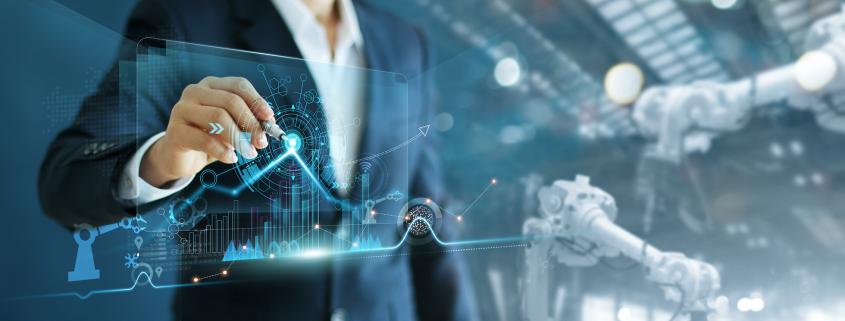Industrial IoT trends in 2022
The global Industrial Internet of Things (IIoT) market size was estimated at $216.14 billion in 2020. And by 2026, it is expected to reach $771.072 billion, according to Polaris Market Research projections.
The rapid digital transformations that have occurred during the pandemics are among the primary drivers of this aggressive growth rate. IIoT equipment manufacturers continue to find cheaper and more affordable ways to develop sensors and processors to meet the demand for increased automation.
Yet, despite favorable winds, lower computing power costs, and improvements in IIoT platform integration, connectivity, and management, few manufacturers have been able to scale their IIoT use cases in a way that yields significant operational or financial benefits. A combination of technical and organizational challenges are often cited as causes.
Find out below how companies can prepare for IIoT and how to turn challenges into opportunities using the top industrial IoT trends for 2022:
1. 5G Growth and private networks
The evolution of 5G and IoT are correlated. Indeed, the rapid adoption of 5G networks is accelerating the world of IoT… And IIoT as it offers enterprises significant advantages over 4G such as global internet coverage or much faster data transfers.
In addition, many manufacturers are implementing private 5G networks in their smart factories to automate manufacturing processes by reducing workloads and error margins.
2. Cloud and Edge Computing
One of the most important benefits of industrial IoT (IIoT) is the ability to create a common data model from any connected data source.
In short, Edge computing allows companies to process sensor and device data locally and in real time. Edge computing is evolving as a solution to latency issues common in cloud-based solutions. This allows companies to avoid lags and delays; that frequently lead to production problems, security issues and open the door to security threats.
Find out more about the Cloud-Code solution offered by thethings.iO
3. Cybersecurity Concerns
Like any new technology development, the growth of IoT devices will lead to new security vulnerabilities for businesses. Indeed, if one device is compromised, the other devices it communicates with could be just as vulnerable.
Currently, there are very few government standards at the European or global level requiring companies to stay on top of their cybersecurity. In most cases, investment in cybersecurity is a decision made voluntarily by the business owners themselves.
In fact, to keep up with the technological advances of 2022, it is important to monitor and grow cybersecurity tools.
4. Bundled IoT for enterprises
While the IoT space is growing rapidly, there is an initial learning curve that could discourage companies and business leaders from adopting it.
Because bundled IoT solutions offer user-friendly features and integrated analytics, they are driving IoT adoption.
At thethings.iO, we leverage each new solution developed for a particular need by offering it to other similar applications where it can be useful.




